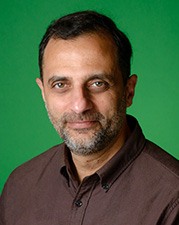In a blog post earlier this year, I highlighted the top transportation trends to watch in 2018, which included the upsurge in data and hardware convergence. Elaborating on this trend, this post explores the importance of technology convergence in the trucking industry and what it means for fleets today, and in the future – particularly in terms of more devices, sensors, hardware and additional costs.
For me, and the team at SmartDrive, we are excited to not only make this long elusive dream a reality, but also, to be working with great companies that share this dream and the drive to make it real.
The transportation industry is in a state of transformation. Emerging technologies are making fleets safer and more efficient—but that also means more devices, more sensors and additional hardware – along with more disconnected data that needs to be matched up and reconciled to understand what is really happening in the fleet. Fleets are struggling with how to manage the number of devices on the windshield and the connection of those devices in the vehicle, and with how to manage those devices and information from those devices. In fact, results of a recent FleetAnswers survey showed:
- 50% of fleet leaders are unhappy about the lack of data integration
- 58% of fleet leaders are not very satisfied with their telematics experience
- Fleets are spending $52 on telematics monthly subscriptions + $800 on hardware per vehicle
As the truck cab becomes increasingly more crowded, the introduction of new technologies pose a dilemma for many fleet managers trying to determine where and how added hardware can fit on – or in – the truck. Exacerbating the situation is the escalating cost of management services, vendor lock-ins, lack of choice, silo’d data and multiple points of failure.
How Did We Get to This Point?
With so many technologies – and an abundance of options – fleets are asking the questions, “How did we get to this point?” and “Why are things different now?”
It comes down to … transportation technology was very narrowly focused and limited; an open platform was too difficult to bring to practice; and customers were asking for it, but not demanding it. I’m happy to say, all of this has been turned on its head with the scale of disruption that the industry is now facing. Customers are now sophisticated and ready for an open platform – and demanding it – which is where companies like SmartDrive, Geotab and others are making the open platform viable.
It’s important to remember that all of this discussion is not just about the equipment or the “promised land” of a single box. An information flood coming from these “connected” devices poses the added challenge of how to derive valuable insights from the data. Since most in-vehicle devices weren’t designed with interoperability in mind, the data silo problem is only getting worse.
An open and connected platform ensures that true convergence can occur across technology, data and services—allowing fleet managers to seamlessly integrate a multitude of solutions and obtain a holistic view of the vehicle, driver and operational performance. The result is a converged infrastructure that reduces total cost of ownership, minimizes interoperability issues between in-vehicle devices and opens up new frontiers for data-driven decision-making based upon new, actionable intelligence.
Learn more about the Top Trends in Trucking in our ebook and on-demand webinar.
Watch for Part 2 later this week!
 With more than 25 years of technology and leadership experience as an entrepreneur and technology thought leader, SmartDrive CTO Ray Ghanbari, has a deep understanding of analytics and data-driven value creation across multiple industries. Most recently, Ray was VP, Product Development for FICO. Previously, he was the CTO and EVP of Product Development for PatientSafe Solutions, EVP Strategy and Products for Vital Images, CTO at Ingenix (a $1.3B subsidiary of UnitedHealth Group) and CTO for the Performance Marketing division of Yahoo! Ray earned his Ph.D. in Electrical Engineering and Computer Science from MIT. In addition, he earned a Master of Science degree in physics from Cambridge University in England and a Bachelor of Science degree in Electrical Engineering and Computer Science from the University of Illinois-Urbana.
With more than 25 years of technology and leadership experience as an entrepreneur and technology thought leader, SmartDrive CTO Ray Ghanbari, has a deep understanding of analytics and data-driven value creation across multiple industries. Most recently, Ray was VP, Product Development for FICO. Previously, he was the CTO and EVP of Product Development for PatientSafe Solutions, EVP Strategy and Products for Vital Images, CTO at Ingenix (a $1.3B subsidiary of UnitedHealth Group) and CTO for the Performance Marketing division of Yahoo! Ray earned his Ph.D. in Electrical Engineering and Computer Science from MIT. In addition, he earned a Master of Science degree in physics from Cambridge University in England and a Bachelor of Science degree in Electrical Engineering and Computer Science from the University of Illinois-Urbana.